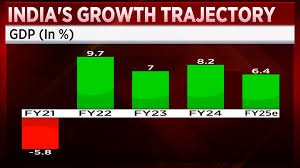Revolutionizing Horticulture Subsidies: Introducing CDP Suraksha
In a significant move towards modernizing horticulture subsidies, the government has introduced the Comprehensive Development Programme (CDP) Suraksha. This initiative aims to streamline the distribution of subsidies and benefits to farmers engaged in horticulture activities. With a focus on leveraging technology and promoting transparency, CDP Suraksha is set to bring about a paradigm shift in the agricultural sector.
Understanding CDP Suraksha Under the CDP Suraksha programme, horticulture subsidies will be disbursed directly to the bank accounts of eligible farmers. This direct benefit transfer (DBT) mechanism eliminates intermediaries and ensures that the intended beneficiaries receive the subsidies promptly. By leveraging the Aadhaar-enabled payment system, the government aims to minimize leakages and ensure the efficient utilization of funds.
Promoting Financial Inclusion One of the key objectives of CDP Suraksha is to promote financial inclusion among horticulture farmers. By linking subsidy payments to bank accounts, the initiative encourages farmers to adopt formal banking channels for their financial transactions. This not only enhances the transparency of transactions but also empowers farmers by providing them with access to various banking services.
Harnessing Technology for Growth CDP Suraksha harnesses the power of technology to transform the horticulture sector. Through the use of mobile applications and online portals, farmers can conveniently apply for subsidies and track the status of their applications in real-time. This digitization of processes not only reduces paperwork but also enhances the efficiency and effectiveness of subsidy disbursal.
Empowering Farmers By ensuring direct transfer of subsidies, CDP Suraksha empowers farmers to make informed decisions regarding their horticulture activities. With timely access to subsidies, farmers can invest in modern farming techniques, purchase high-quality inputs, and improve the overall productivity of their farms. This, in turn, contributes to the socio-economic development of rural areas and enhances farmers’ livelihoods.
Conclusion The introduction of CDP Suraksha marks a significant step towards revolutionizing horticulture subsidies in India. By leveraging technology and promoting transparency, the initiative aims to empower farmers and catalyze the growth of the agricultural sector. With its focus on direct benefit transfer and financial inclusion, CDP Suraksha is poised to bring about positive changes in the lives of horticulture farmers across the country.

Why this News is Important
Addressing Agricultural Challenges The introduction of CDP Suraksha addresses several challenges faced by horticulture farmers in accessing subsidies and benefits. By streamlining the subsidy disbursal process, the initiative aims to enhance the efficiency of agricultural operations and improve farmers’ livelihoods.
Promoting Transparency and Accountability CDP Suraksha promotes transparency and accountability in the distribution of subsidies by eliminating intermediaries and leveraging technology for direct benefit transfer. This ensures that subsidies reach the intended beneficiaries promptly, minimizing leakages and enhancing the effective utilization of funds.
Encouraging Financial Inclusion By linking subsidy payments to bank accounts, CDP Suraksha encourages financial inclusion among horticulture farmers. This empowers farmers by providing them with access to formal banking services and facilitating cashless transactions, thereby enhancing their financial literacy and resilience.
Historical Context
The introduction of CDP Suraksha builds upon the government’s ongoing efforts to reform the agricultural sector and address the challenges faced by farmers. In recent years, various initiatives such as the Pradhan Mantri Kisan Samman Nidhi (PM-Kisan) and the Kisan Credit Card (KCC) scheme have been launched to provide financial assistance and support to farmers across the country.
Key Takeaways from “Revolutionizing Horticulture Subsidies: Introducing CDP Suraksha”
| Serial Number | Key Takeaway |
|---|---|
| 1. | CDP Suraksha aims to streamline the distribution of horticulture subsidies through direct benefit transfer. |
| 2. | The initiative promotes financial inclusion among horticulture farmers by linking subsidy payments to bank accounts. |
| 3. | By leveraging technology, CDP Suraksha enhances transparency and accountability in subsidy disbursal processes. |
| 4. | Direct transfer of subsidies empowers farmers to make informed decisions and invest in modern farming techniques. |
| 5. | CDP Suraksha contributes to rural development by promoting the socio-economic upliftment of horticulture farmers. |
Important FAQs for Students from this News
1. What is CDP Suraksha?
CDP Suraksha is a Comprehensive Development Programme introduced by the government to revolutionize horticulture subsidies. It aims to streamline the distribution of subsidies to farmers engaged in horticulture activities through direct benefit transfer.
2. How does CDP Suraksha promote financial inclusion among farmers?
CDP Suraksha promotes financial inclusion among farmers by linking subsidy payments to their bank accounts. This encourages farmers to adopt formal banking channels for their financial transactions, thereby enhancing transparency and empowering farmers.
3. What are the key objectives of CDP Suraksha?
The key objectives of CDP Suraksha include promoting transparency and accountability in subsidy disbursal, fostering technological adoption among farmers, empowering them to make informed decisions, and contributing to rural development by enhancing farmers’ income levels.
4. How does CDP Suraksha leverage technology to streamline subsidy disbursal?
CDP Suraksha leverages technology through mobile applications and online portals, allowing farmers to conveniently apply for subsidies and track the status of their applications in real-time. This digitization of processes reduces paperwork and enhances the efficiency of subsidy disbursal.
5. What are the benefits of direct transfer of subsidies under CDP Suraksha?
Direct transfer of subsidies under CDP Suraksha ensures that subsidies reach the intended beneficiaries promptly, minimizing leakages and enhancing the effective utilization of funds. It empowers farmers to invest in modern farming techniques, thereby improving the productivity and profitability of their farms.
Some Important Current Affairs Links

















 Exciting News!
Exciting News!  Join Our Telegram Channel Now!
Join Our Telegram Channel Now!
 Join our Telegram channel for a thrilling adventure into the world of daily current affairs.
Join our Telegram channel for a thrilling adventure into the world of daily current affairs. 
 Don’t miss out on the latest updates and insights! Click to join now and be part of the knowledge revolution!
Don’t miss out on the latest updates and insights! Click to join now and be part of the knowledge revolution! 
